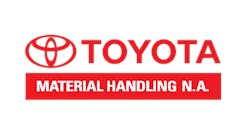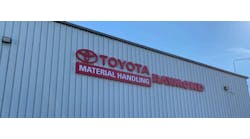“Moneyball” for Material Handling: Using Metrics to Optimize Fleet Performance
As a high school baseball prospect, Billy Beane was rated highly because he looked like a future major league player. It was easy for scouts to visualize the handsome, six-foot, four-inch Beane—who was played in the movie “Moneyball” by Brad Pitt—patrolling a major league outfield.
But he never performed to scouts’ expectations, eventually finding his place in baseball in the front office instead of on the field, becoming the general manager of the Oakland Athletics. As the executive directly responsible for the talent on his team, he used his experience as a prospect to re-think how his organization evaluated the players they acquired.
Instead of relying on the instinct and experience of baseball scouts, who had badly misevaluated his own talent based on his physical appearance, Beane worked with a Harvard-educated economist to analyze the player metrics that most accurately correlated with scoring runs—the ultimate goal of the team’s offense—and selected players based on those metrics. This “moneyball” approach helped turn around the struggling Oakland franchise and has led to a data-driven revolution in sports management
The situation in material handling is not much different today than the situation in baseball when Beane became general manager of the Athletics: Warehouse managers and supply chain executives rely on observation and experience to make key decisions on fleet size and operator performance.
The problem, as Beane’s experience illustrates, is that observation, even when supported with experience and instinct, does not always generate the best decisions. Plus, in the case of the warehouse, when observations lead to poor decisions, there is often no indication that a better option was available. Unlike in baseball where Beane’s .219 career batting average was unmistakable proof of a scout’s mistake, an organization can operate for years investing too much in equipment or suffering poor operator productivity without realizing it.
The good news for warehouse managers is that they don’t have to find a Harvard-educated economist and undertake an analysis of the metrics that impact efficiency in the warehouse. They already know those. What they lack is the equivalent of the baseball scorekeeper who records every pitch and swing of the bat in a way that supports decisions based on data.
Those warehouse “scorekeepers” now exist in the form of forklift fleet management technology that uses telematics to collect, record and transmit data on forklift activity. With this technology in place, warehouse managers suddenly become the equivalent of a baseball general manager who can supplement scouting reports with hard data on performance.
One of the prime early drivers of forklift fleet management has been OSHA compliance. By controlling access to the truck, the system guides the operator through the necessary safety procedures required prior to operation and records their compliance in a way that simplifies reporting. This has proven such a valuable function that some organizations have deployed fleet management technology solely to ensure that their players are properly “suited up.”
Yet, the benefits of these systems extend well beyond compliance. They detect and report on impacts to identify unsafe driving habits or unsafe conditions in the warehouse. They can monitor forklift utilization to ensure fleets are the right size, and track operator productivity to determine where additional training is required. They can also maximize battery life, eliminate congestion at charging stations and manage equipment service intervals.
While traditionalists were slow to embrace Billy Beane’s approach to the game, many successful teams now appreciate the value of metrics. Perhaps it’s time for material handling to take a page from baseball’s playbook and supplement the experience and intuition of supply chain executives with meaningful data. Telematics and the fleet management systems they support are an important step in this evolution.
Jim Gaskell is director of technology business development with forklift manufacturer Crown Equipment Corp.



